Related Research Articles

Edward Kelly was an Australian bushranger, outlaw, gang leader and convicted police-murderer. One of the last bushrangers, he is known for wearing a suit of bulletproof armour during his final shootout with the police.

Nilanjana Sudeshna "Jhumpa" Lahiri is a British-American author known for her short stories, novels, and essays in English and, more recently, in Italian.

Helen Garner is an Australian novelist, short-story writer, screenwriter and journalist. Garner's first novel, Monkey Grip, published in 1977, immediately established her as an original voice on the Australian literary scene—it is now widely considered a classic. She has a reputation for incorporating and adapting her personal experiences in her fiction, something that has brought her widespread attention, particularly with her novels Monkey Grip and The Spare Room (2008).

Zadie Smith FRSL is an English novelist, essayist, and short-story writer. Her debut novel, White Teeth (2000), immediately became a best-seller and won a number of awards. She became a tenured professor in the Creative Writing faculty of New York University in September 2010.

Eric Matthew Schlosser is an American journalist and author known for his investigative journalism, such as in his books Fast Food Nation (2001), Reefer Madness (2003), and Command and Control: Nuclear Weapons, the Damascus Accident, and the Illusion of Safety (2013).
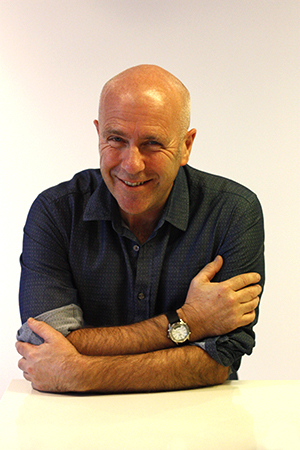
Richard Miller Flanagan is an Australian writer, who has also worked as a film director and screenwriter. He won the 2014 Man Booker Prize for his novel The Narrow Road to the Deep North.

Satchel Ronan O'Sullivan Farrow is an American journalist. The son of actress Mia Farrow and filmmaker Woody Allen, he is known for his investigative reporting on sexual abuse allegations against film producer Harvey Weinstein, which was published in The New Yorker magazine. The magazine won the 2018 Pulitzer Prize for Public Service for this reporting, sharing the award with The New York Times. Farrow has worked for UNICEF and as a government advisor.

True History of the Kelly Gang is a novel by Australian writer Peter Carey, based loosely on the history of the Kelly Gang. It was first published in Brisbane by the University of Queensland Press in 2000. It won the 2001 Booker Prize and the Commonwealth Writers Prize in the same year. Despite its title, the book is fiction and a variation on the Ned Kelly story.

The Old Melbourne Gaol is a former jail and current museum on Russell Street, in Melbourne, Victoria, Australia. It consists of a bluestone building and courtyard, and is located next to the old City Police Watch House and City Courts buildings, and opposite the Russell Street Police Headquarters. It was first constructed starting in 1839, and during its operation as a prison between 1845 and 1924, it held and executed some of Australia's most notorious criminals, including bushranger Ned Kelly and serial killer Frederick Bailey Deeming. In total, 133 people were executed by hanging. Though it was used briefly during World War II, it formally ceased operating as a prison in 1924; with parts of the jail being incorporated into the RMIT University, and the rest becoming a museum.
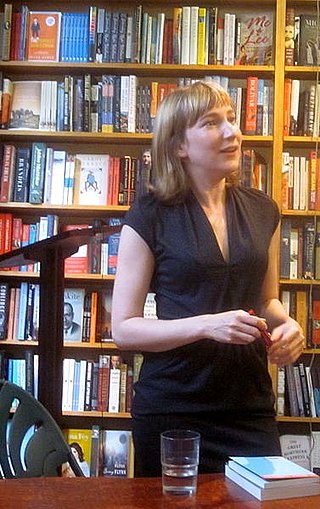
Sheila Heti is a Canadian writer.
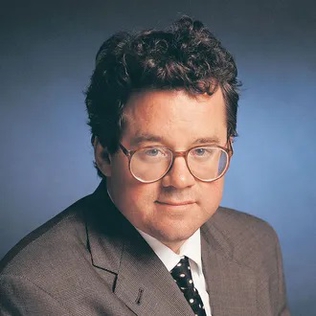
Michael Thomas Kelly was an American journalist for The New York Times, a columnist for The Washington Post and The New Yorker, and a magazine editor for The New Republic, National Journal, and The Atlantic. He came to prominence through his reporting on the 1990–1991 Gulf War, and was well known for his political profiles and commentary. He suffered professional embarrassment for his role as senior editor in the Stephen Glass scandal at The New Republic. Kelly was killed in 2003 while covering the invasion of Iraq; he was the first US journalist to die during this war.
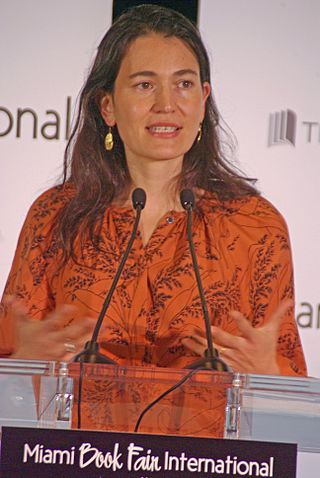
Nicole Krauss is an American author best known for her four novels Man Walks into a Room (2002), The History of Love (2005), Great House (2010) and Forest Dark (2017), which have been translated into 35 languages. Her fiction has been published in The New Yorker, Harper's, Esquire, and Granta's Best American Novelists Under 40, and has been collected in Best American Short Stories 2003, Best American Short Stories 2008 and Best American Short Stories 2019. In 2011, Nicole Krauss won an award from the Anisfield-Wolf Book Awards for Great House. A collection of her short stories, To Be a Man, was published in 2020 and won the Wingate Literary Prize in 2022.
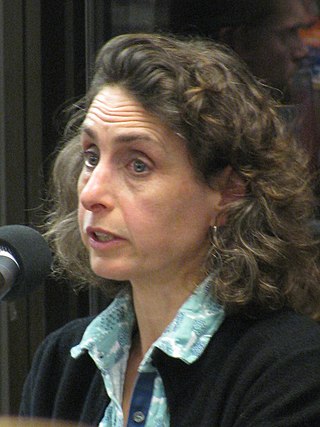
Elizabeth Kolbert is an American journalist, author, and visiting fellow at Williams College.

The handwritten document known as the Jerilderie Letter was dictated by Australian bushranger Ned Kelly to fellow Kelly Gang member Joe Byrne in 1879. It is one of only two original Kelly letters known to have survived.

Chloe Melisande Hooper is an Australian author.
The Ned Kelly Awards are Australia's leading literary awards for crime writing in both the crime fiction and true crime genres. They were established in 1996 by the Crime Writers Association of Australia to reward excellence in the field of crime writing within Australia.

Adrian McKinty is a Northern Irish writer of crime and mystery novels and young adult fiction, best known for his 2020 award-winning thriller, The Chain, and the Sean Duffy novels set in Northern Ireland during The Troubles. He is a winner of the Edgar Award, the Theakston Old Peculier Crime Novel of the Year Award, the Macavity Award, the Ned Kelly Award, the Barry Award, the Audie Award, the Anthony Award and the International Thriller Writers Award. He has been shortlisted for the CWA Ian Fleming Steel Dagger and the Grand Prix de Littérature Policière.
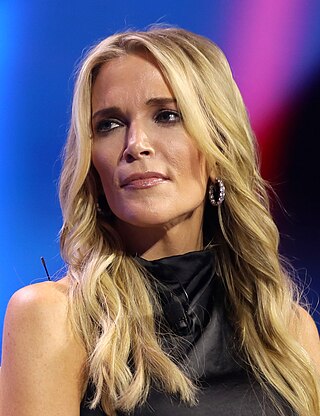
Megyn Marie Kelly is an American journalist and media personality. She currently hosts a talk show and podcast, The Megyn Kelly Show, that airs live daily on the Triumph channel on SiriusXM. She was a talk show host at Fox News from 2004 to 2017 and a host and correspondent with NBC News from 2017 to 2018. She is also active in posting to her Instagram page and YouTube channel.
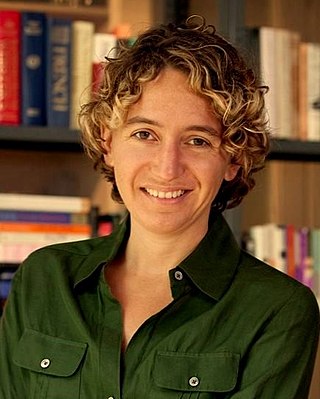
Kathryn Schulz is an American journalist and author. She is a staff writer at The New Yorker. In 2016, she won the Pulitzer Prize for Feature Writing for her article on the risk of a major earthquake and tsunami in the Pacific Northwest. In 2023, she won the Lambda Literary Award for Lesbian Memoir or Biography.
J. J. Kenneally was an Australian journalist and trade unionist. An early populariser of Australian bushranger Ned Kelly and his gang via his book The Inner History of the Kelly Gang and Their Pursuers (1929), he was also one of the original members of the country's Labor Party and later formed his own party.
References
- 1 2 Press, Michelle (19 August 2007). "Cyclic Universe--World of Words--Nuclear Terror". Scientific American. Archived from the original on 5 September 2012. Retrieved 12 December 2013.
- 1 2 "The Invisible History of the Human Race: How DNA and History Shape Our Identities and Our Futures". Amazon.com. Archived from the original on 6 September 2018. Retrieved 5 September 2018.
- 1 2 3 4 Grimes, William (1 August 2007). "Books of the Times: Language Evolution's Slippery Tropes". The New York Times. Archived from the original on 20 October 2016. Retrieved 18 February 2017.
- ↑ "Christine Kenneally". ChristineKenneally.com. Archived from the original on 27 September 2013. Retrieved 12 December 2013.
- ↑ Kenneally, Christine (2007). The first word : the search for the origins of language. New York: Viking. p. 7. ISBN 978-0-670-03490-1. OCLC 80460757.
- ↑ Kenneally (20 June 2011). "Goodbye, Genetic Blueprint: What the new field of epigenetics reveals about how DNA really works". Slate. Archived from the original on 14 December 2013. Retrieved 22 December 2013.
- ↑ Kenneally (30 December 2004). "Surviving the Tsunami". Salon. Archived from the original on 6 December 2013. Retrieved 22 December 2013.
- ↑ Kenneally (3 July 2006). "The Deepest Cut". The New Yorker. Archived from the original on 15 December 2013. Retrieved 15 December 2013.
- 1 2 Kenneally (26 October 2009). "The Inferno After the deadliest fires it has ever known, a nation reassesses". The New Yorker. Archived from the original on 12 December 2013. Retrieved 12 December 2013.
- ↑ Kenneally (22 April 2008). "When Language Can Hold the Answer". The New York Times. Archived from the original on 2 August 2017. Retrieved 18 February 2017.
- 1 2 3 Kenneally (31 August 2011). "A Hero's Legend and a Stolen Skull Rustle Up a DNA Drama". The New York Times. Archived from the original on 20 October 2016. Retrieved 18 February 2017.
- ↑ "THE LYING STONES OF MARRAKECH Penultimate Reflections in Natural History". The New York Times. 24 September 2000. Archived from the original on 28 August 2017. Retrieved 18 February 2017.
- ↑ "BOOKS IN BRIEF: NONFICTION". The New York Times. 5 October 2003. Archived from the original on 2 August 2017. Retrieved 18 February 2017.
- ↑ "Giddyap". The New York Times. 2 March 2008. Archived from the original on 2 August 2017. Retrieved 18 February 2017.
- ↑ "Here, There Be Monsters 'How to Catch a Bogle,' by Catherine Jinks". The New York Times. 13 September 2013. Archived from the original on 2 August 2017. Retrieved 18 February 2017.
- ↑ Kenneally (August 2012). "The Forgotten Ones". The Monthly. Archived from the original on 11 March 2014. Retrieved 15 December 2013.
- ↑ Kenneally (December 2010 – January 2011). "Archive This". The Monthly. Archived from the original on 18 June 2013. Retrieved 22 December 2013.
- 1 2 "Mander Jones Awards Recipients 2006-2010". Australian Society of Archivists website. Archived from the original on 13 December 2013. Retrieved 13 December 2013.
- ↑ Kenneally (21 July 2010). "Mapping the Mountain of Human DNA". New Scientist. Archived from the original on 12 May 2015. Retrieved 25 August 2017.
- ↑ Kenneally (21 May 2008). "So You Think Humans Are Unique?". The New Scientist. Archived from the original on 24 December 2014. Retrieved 25 August 2017.
- ↑ Kenneally (27 August 2018). "We Saw Nuns Kill Children: The Ghosts of St. Joseph's Catholic Orphanage". BuzzFeed News. Archived from the original on 6 September 2018. Retrieved 6 September 2018.
- ↑ Shapiro, Ari (29 August 2018). "BuzzFeed Investigation Details Decades Of Systemic Child Abuse At Vermont Orphanage". NPR.org. Archived from the original on 3 September 2018. Retrieved 6 September 2018.
- ↑ Perron, Darren (27 August 2018). "Horrific allegations of abuse at Burlington orphanage". WCAX. Archived from the original on 6 September 2018. Retrieved 6 September 2018.
- ↑ Wunderlich, Renee (5 September 2018). "Burlington bishop posts statement about steps forward after 'scandal and sin'". NBC 5. Archived from the original on 6 September 2018. Retrieved 6 September 2018.
- 1 2 3 Eakin, Emily (12 August 2007). "Look Who's Talking". The New York Times. Archived from the original on 20 October 2016. Retrieved 18 February 2017.
- 1 2 3 4 Hoff, Erika (June 2008). "Book Review: Evolingo, or Evolutionary Psychology Meets Linguistics" (PDF). Evolutionary Psychology. Archived from the original on 28 January 2012. Retrieved 13 December 2013.
{{cite news}}: CS1 maint: unfit URL (link) - 1 2 "The Invisible History of the Human Race: How DNA and History Shape Our Identities and Our Futures". Publishers Weekly. Archived from the original on 6 October 2014. Retrieved 26 September 2014.
- ↑ The Stella Prize 2015 Shortlist Archived 16 March 2016 at the Wayback Machine , The Stella Prize. Retrieved 24 June 2015
- ↑ "Los Angeles Times Book Prizes' Announces Kirsch Award Winner Maxine Hong Kingston: 28th Annual Literary Awards Finalists Announced for April 25th Presentation". Los Angeles Times. 28 February 2008. Archived from the original on 21 December 2013. Retrieved 15 December 2013.
- ↑ Kenneally (February 2011). "Lousy Science". The Monthly. Archived from the original on 12 December 2013. Retrieved 14 December 2013.
- ↑ Story, Hannah (20 May 2024). "Aboriginal poet wins $40,000 at major literary awards with 'profound' verse novel". ABC News. Retrieved 20 May 2024.
- ↑ "The Complete Inner History of the Kelly Gang and their Pursuers". ChristineKenneally.com. 31 August 2011. Archived from the original on 23 May 2013. Retrieved 13 December 2013.
- ↑ Flanagan, Martin (28 March 2003). "The many histories of the Kelly Gang". The Age. Archived from the original on 9 May 2013. Retrieved 13 December 2013.
- ↑ "A new home for Ned Kelly: The Ned Kelly series gallery". National Gallery of Australia website. Archived from the original on 29 November 2010. Retrieved 13 December 2013.
The historical quotations displayed with the images in the Ned Kelly series were chosen by Sidney Nolan from the Royal Commission's report of 1881 on the Victorian police force and the conduct of the hunt for the Kelly gang, newspapers of the day, and JJ Kenneally's The Inner History of the Kelly Gang, Melbourne, 1945.
- ↑ Sooke, Alastair (26 September 2013). "Ned Kelly, Sidney Nolan and the story of Australian art". BBC.com. Archived from the original on 16 December 2013. Retrieved 13 December 2013.
"While working on the series, Nolan drew extensively upon records such as contemporary newspapers and JJ Kenneally's The Complete Inner History of the Kelly Gang and Their Pursuers.